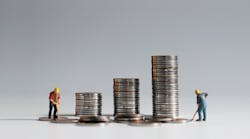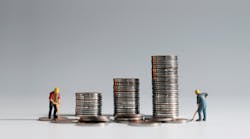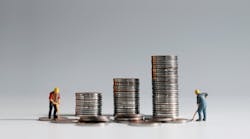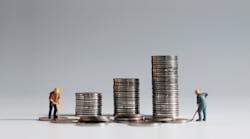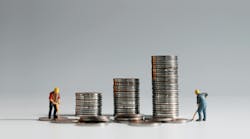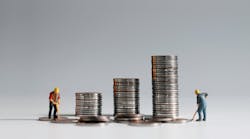Electrical distributor profitability showed some improvement in 2002, but net margins remain at one of the lowest levels in recent memory, according to the Electrical Manufacturers Credit Bureau (EMCB), Temecula, Calif.
The national norm for net profit for EMCB subscribers last year was 2.27 percent, up from 1.43 percent in 2001. Gross profits for EMCB subscribers also increased, from 18.12 percent in 2001 to 19.44 percent last year.
Other EMCB national norms in 2002 for electrical distributors were current assets composed of cash (5.59 percent), receivables (42.21 percent), and inventory (48.75 percent). The current ratio was 1.92 to 1, the quick ratio was 0.92 to 1, and the worth/debt ratio was 0.69 to 1.
According to EMCB, the majority of distributors are represented in the accompanying chart on page 3 in the net worth columns from under $150,000 up through $10 million. All the EMCB ratios showed slight increases for 2002, with the increase in net profit being the most significant.
EMCB said, “On the surface, it would appear that 2002 was a better year than 2001.”
However, it cautioned that when comparing sales, gross profit and net profit before taxes for companies that reported in both years, sales were down 8.08 percent, while net profits before taxes were up 4.7 percent. Without an increase in sales, profits can only increase through cost savings, principally from employee layoffs. EMCB said most of the profit increase can be traced to the larger companies that have greater room to cut costs and employees.
One change in this year’s EMCB report is additional data on companies with a net worth of over $10 million. The gross profits of these 20 larger companies tend to dominate the statistics. The additional column was added to separate the data of about 20 companies, including WESCO Distribution Inc., Pittsburgh, Pa., and Graybar Electric Co., St. Louis, which now provide data. Their gross profit percentages are about 18%, according to EMCB. Rexel and Hagemeyer also provided data and had gross profit percentages of 24.59% and 21.18% respectively. As a point of reference, Home Depot and Lowe’s had net profits of 10.08% and 8.90% respectively and gross profit percentages of about 30%.
EMCB’s Norms Report is published as a special service to the electrical industry. The Bureau believes the support of manufacturers and distributors makes possible those services that provide greater stability in the industry by helping create sounder credit extension.



